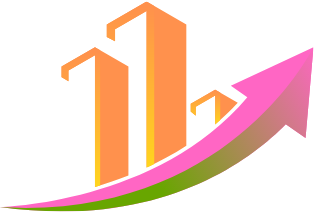Healthcare is not immune to digital evolution, particularly in a society where convenience and access are king. For Australians particularly in rural areas, those with chronic health conditions, or where they lead busy lives e-scripts and telehealth are quickly becoming the preferred method of managing their health. Online platforms have emerged providing timely, secure prescription and mental health services that are beginning to challenge our norms regarding care.
With a focus on minimizing wait times and travel when simply getting a sore throat checked or getting a prescription, Australians have embraced knowing that they can access medical support when, where, and how they want. This change is not just about efficiency, but it is about equity, affordability, and meeting patients on their terms.
E-scripts and Online Prescriptions
An electronic prescription or e-script is the digital format of a prescription. Instead of a piece of paper from your GP, the e-script is a secure digital token that you receive most commonly via SMS or email to use directly at the pharmacy or online.
There are clear and obvious benefits:
- Quicker access to medication
- Lower risk of prescription mistakes
- Green and paper-free
- Simpler Refills and Renewals
This is a convenience that all Australians with ongoing medication needs can enjoy. Instead of allocating time to go for an appointment for a regular prescription, patients can submit their request for a prescription, be reviewed by a medical practitioner and receive their prescription in less than 30 minutes with some services like Quick E-script Australia, without leaving their home address.
The Journey of Digital Prescription is Simple:
The process is:
Step 1: Online Consultation
The patient fills out a secure questionnaire or consults for an online (telehealth) appointment through a registered doctor.
Step 2: Doctor Review
A qualified medical practitioner will assess the request and advise accordingly and will provide an e-script if appropriate.
Step 3: Script Token
The patient then receives a digital prescription token via text or email.
Step 4: Medication
The patient can either take a token to their pharmacy or order their medication online for home delivery.
This is a timesaving and money-saving experience for any patient that has ongoing or chronic health problems, or patients who have recurring medication needs, such as birth control, asthma medication, antidepressants etc.
Mental health is another area where Australia has gradually shifted towards access and affordability with telehealth and progressive policies. Public awareness is increasing, and stigma is fading, leading to more Australians participating in online counselling, therapy sessions, and mental health plans.
However, affordability is still a significant barrier. A key component of affordability with mental health care is the bulk billing mental health plan, which is a government-supported initiative that allows eligible Australians to access a set number of subsidised mental health sessions in a calendar year through Medicare. This may include therapy with a psychologist, clinical social worker, or occupational therapist, in person or through telehealth.
Technology’s Role in Supporting Mental Health
Telehealth platforms have allowed many Australians to engage with mental wellbeing with much more freedom and much less cost, as well as being more respectful of their time and privacy. Some of the benefits include:
- Ability to access from anywhere – Essential for rural and remote regions
- Convenient times – Late night or weekends
- More privacy – No waiting rooms to contend with
- Cost-reducing – Particularly when combined with Medicare rebate
Telehealth services and platforms are closing a major gap in effectively engaging with mental health, whether on an ongoing basis or through GP referral, regardless of the use of the digital options available.
Addressing Concern: Is Online Care Better than Face-to-Face Care?
One common question is whether care in a digital sense is as effective as care done face to face. Reviews of the research indicate that for many conditions – in particular around mental health conditions with anxiety, depression, or stress management – telehealth is not far away in outcomes from face-to-face services.
The key instructional components for clinicians to get telehealth or online services right and achieve optimal outcomes are:
- Good clinician-patient communication
- A secure and reliable digital platform
- Patient education and engagement
In fact, for some patients, the convenience of an online appointment, in conjunction with a safe and comfortable environment, can enhance engagement and adherence to treatment.
Regulatory and Safety Issues
Australian guidelines provide clear regulatory standards for digital prescriptions and telehealth services. Practitioners must:
- Register with the Australian Health Practitioner Regulation Agency (AHPRA)
- Follow national privacy standards in telehealth and e-script
- Be clear with pricing and consent processes for the patient
Regardless of whether you are using the service to order antibiotic prescriptions or engaging in counselling, you can have peace of mind that online services are regulated and clinically safe.
Real-World Benefits: Stories of Empowerment
Here are just a few examples:
A working parent applies the solution to the child who is out of asthma inhalers, uses a mobile platform to renew with the pharmacy for prescription pickup during his lunch break, no work missed, no GP appointment.
A regional farmer uses a mental health plan practitioner by telehealth, so they don’t have to make the two-hour journey to the nearest city to access therapy.
A university student dealing with anxiety was able to receive discreet counselling support and prescriptions through an online portal, which was much less overwhelming than going into the pharmacy or clinic.
In Australia, we have been witnessing a shift towards better value healthcare that respects a person’s time, lifestyle, and reflects their mental wellbeing.
Challenges and Constraints
With such a robust and transformative system, there are challenges and constraints to consider:
- Access to technology – Not all patients have access to good quality internet or smart technology.
- Digital literacy – Some individuals will struggle to engage or navigate online platforms.
- Complexity – Certain types of presentations will always require a physical assessment or face-to-face diagnostic assessment.
Governments and healthcare providers are proactively pursuing solutions to shortfalls in reasonable access, education, and service to support and reach people in their communities.
The Way Forward: More Innovation and More Inclusion
As the digital healthcare system progresses in Australia, we are very likely to see an increase in artificial intelligence applications, self-monitoring tools and personalized health plans.
For example:
- Automated reminders for medication refills
- Health records stored digitally across providers
- Integrated mental health tools that present chat, video, and emergency response tools
These innovations are designed to prioritize patient autonomy while maintaining continuity and quality of care.
In conclusion: Health at your fingertips
What was once impossible is now an everyday occurrence – retrieving a prescription without stepping into a clinic, accessing mental health care in the comfort of your bedroom, or receiving healthcare as it suits you. The confluence of digital innovation and care is empowering Australians to take control of their healthcare journeys.
Whether it is managing your mental wellbeing through a bulk billed mental health plan or utilizing a service like Quick E-script Australia to access the medications care allows you to access, online supports are not an isolated trend, but a shift not just in practice, but the paradigm of healthcare cultures.
If supported, educated, and digitally equitable, this shift is making Australia’s healthcare system more personal, inclusive, and responsive than ever.






